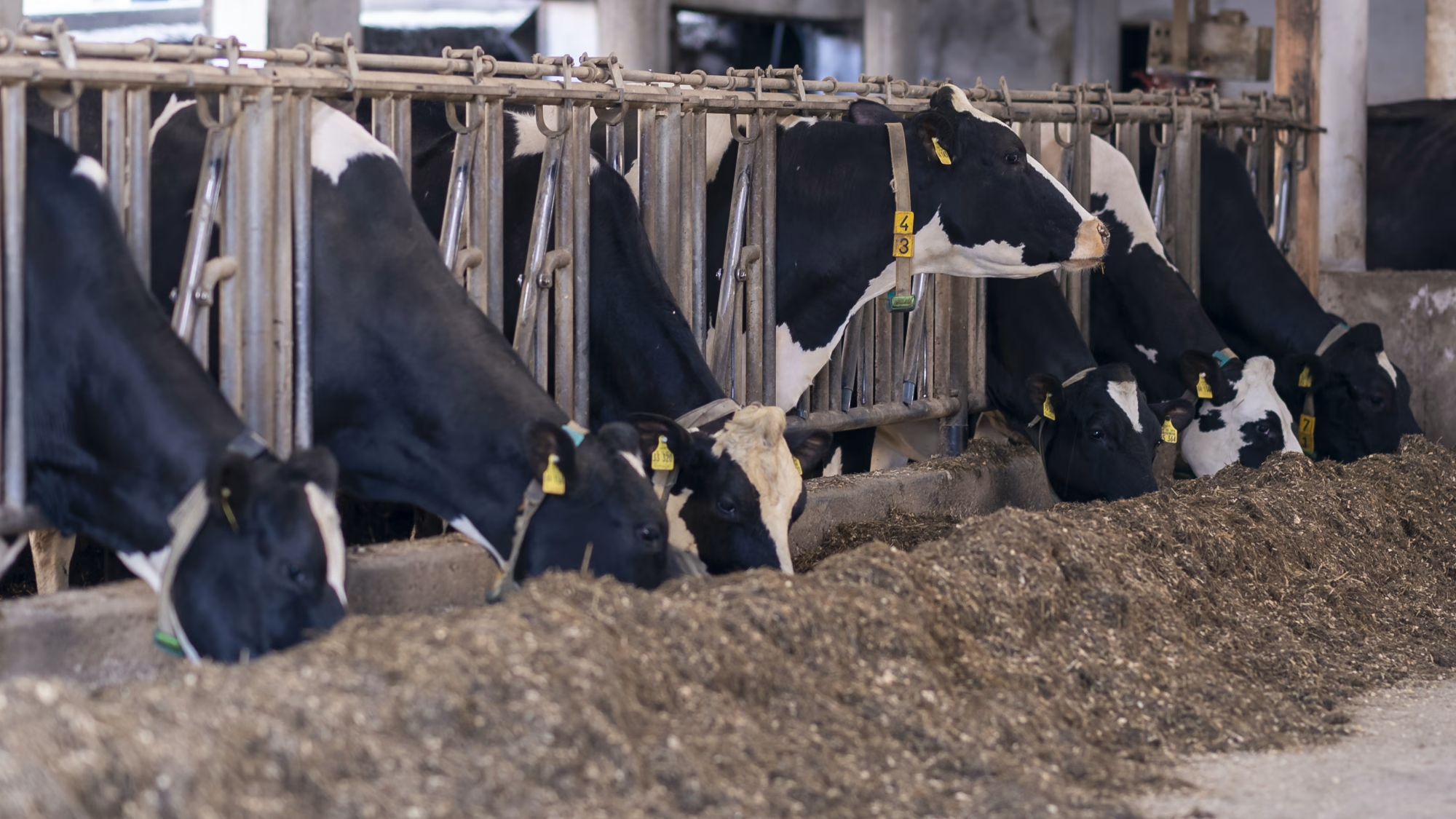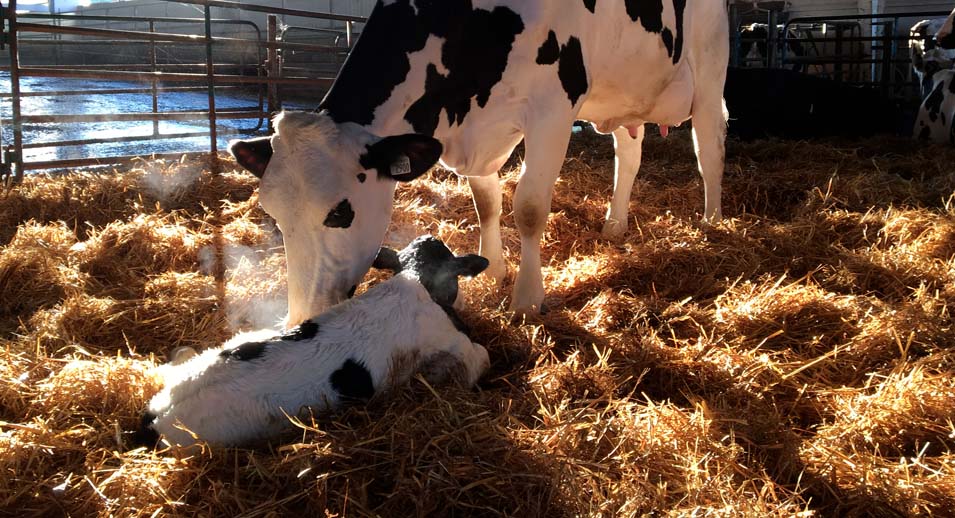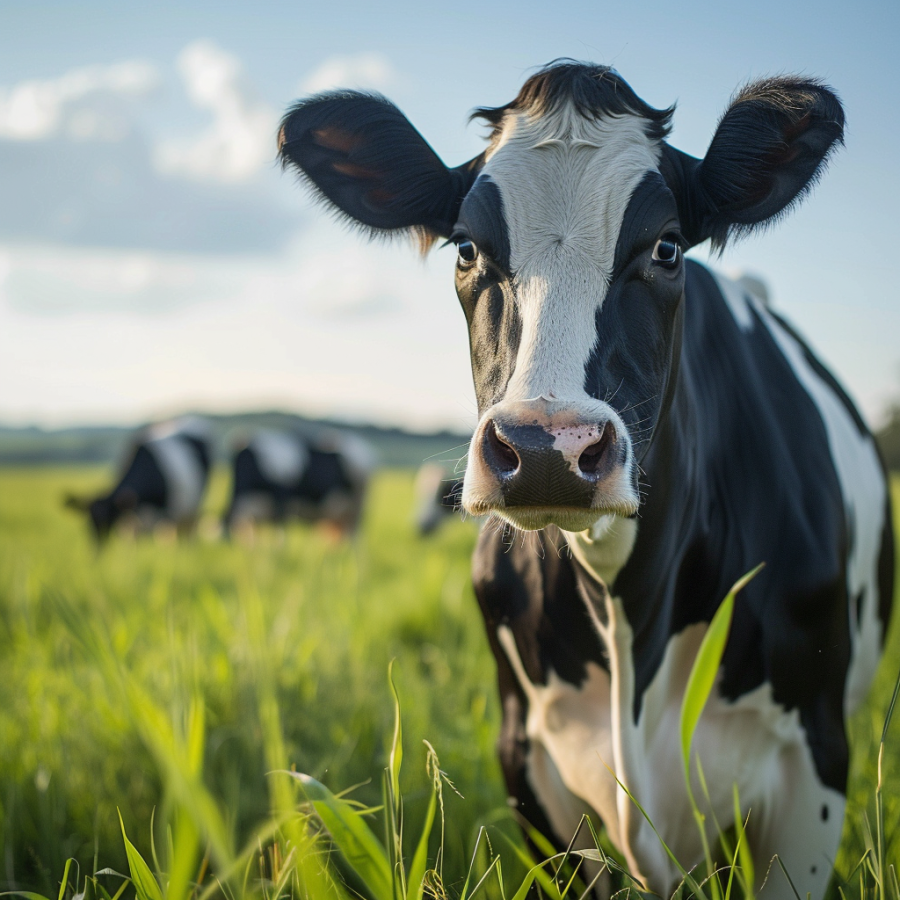Unlock the U.S. genetic system. Make smarter breeding choices and improve your herd’s productivity. Ready?
Understanding the U.S. genetic system empowers you to make better breeding decisions. This knowledge can boost your herd’s production and profitability. Learning to read sire summaries helps you choose the best breeding options, leading to better efficiency and profits. Tools like Breeding Value and Predicted Transmitting Ability predict how well an animal will perform. Having reliable data makes breeding decisions easier. Essential organizations like CDCB and Holstein USA play a significant role in genetic testing. Knowing what they do can help you make smart choices with confidence.
Deciphering Genetics: Breeding Value vs. Predicted Transmitting Ability (PTA)
Understanding the Basics: First, let’s break down the difference between Breeding Value and Predicted Transmitting Ability (PTA). Breeding Value is about an animal’s potential in a breeding plan for traits like milk or protein. Conversely, PTA is about what that animal will likely pass on to its offspring.
The Power of Data: Fueling Genetic Advancement in Dairy Farming
Data is the key to growth in dairy farming. The U.S. uses data from different farms and regions to support its genetic assessment system. Your help in collecting this data is vital for building reliable Predicted Transmitting Abilities (PTAs). These PTAs guide breeding decisions and can significantly boost your herd’s performance. Be proud of your essential role in this progress.
The accuracy of these genetic predictions depends on the amount and variety of data we gather. More data means more precise and helpful genetic insights, which allows farmers to make wise choices, leading to healthier, more productive animals and a more successful dairy business.
This approach is led by organizations like the Council on Dairy Cattle Breeding (CDCB) and Holstein USA. They work hard behind the scenes to collect and study vast amounts of genetic data. Their work ensures that genetic studies are detailed and reflect the conditions faced by dairy herds across the country.
Strong data systems in these organizations form the foundation of the U.S. dairy genetic framework. This team effort demonstrates how data is essential for genetic progress and keeps U.S. dairy competitive worldwide.
The Dynamic Duo: How CDCB and Holstein USA Lead Dairy Genetics
When studying dairy genetics, it is essential to know the roles of the Council on Dairy Cattle Breeding. CDCB gathers and reviews data about milk production and health traits, which form the basis of its genetic evaluations and indexes.
On the other hand, the Holstein Association USA concentrates on type and conformation traits. It handles classification evaluations that help breeders understand their herds’ physical traits, such as udder shape, leg formation, body size, and other key type characteristics.
Together, CDCB and Holstein USA work to create comprehensive indexes like the Total Performance Index (TPI) and Net Merit (NM$). The TPI combines productivity, health, and type traits into one measure, helping farmers track genetic improvements and make informed breeding decisions. The NM$ assesses a bull’s worth based on lifetime earnings, considering production, lifespan, and health traits. These tools help farmers choose sires to boost their herd’s productivity and lifespan.
Unlocking Genetic Potential: The Role of PTAs and STAs in Herd Optimization
Understanding traits and their effects is key for dairy farmers who aim to boost their herd’s genetic potential. PTAs are listed as STAs, which makes it easier to compare traits. Traits like milk yield, fat, and protein significantly affect profit. On the other hand, traits like Udder Composite and Feet & Legs Composite are crucial for a cow’s longevity and functionality. Farmers can use this information to make smarter breeding choices.
Proven Versus Genomic Young Bulls: Crafting a Balanced Genetic Strategy
When selecting genetics for your herd, it’s essential to understand the difference between proven bulls and young genomic bulls. Proven bulls have daughter data, which makes their ratings more reliable. This data helps us make better breeding choices.
Conversely, young genomic bulls offer a glimpse into future potential. Although they have less reliability due to a lack of daughter performance data, they can speed up genetic gains. We evaluate these bulls based on genetic predictions, suggesting how they might perform over time.
By mixing the two, dairy farmers can have the reliability of experienced bulls and the fresh potential of young genomic bulls. This approach enables a flexible breeding strategy, ensuring steady production and continuous genetic improvement.
Genetic Innovations: Charting a Sustainable Future for Dairy Farming
The future of genetic selection is exciting. Genetic assessments now include new traits like feed efficiency and methane reduction. These traits can make your dairy business more profitable and eco-friendly. They hold great potential for the future of dairy farming and offer new opportunities.
Your Guide to Identifying the Ideal Sire for Your Herd
- Identify the Sire: Take note of the bull’s registration name, number, and percent registered Holstein ancestry (%RHA). This information is generally included at the beginning of the report and is used to identify the bull accurately.
- Check Genetic Status and Codes: Examine the genetic codes for specified conditions, such as BLAD, CVM, or Brachyspina. Note whether the bull is free of these or any other problems. This will allow you to prevent possible health concerns in your herd.
- Review Parentage Details: Examine the pedigrees, including TPI values, categorization scores, and genetic codes for the father and mother. This will provide a more complete picture of the genetic pool from which the Sire originated.
- Evaluate Production Traits: Inspect the PTAs for Milk, Fat, and Protein. These values reflect what the father will likely pass on regarding milk output and components to his progeny. Compare his statistics to his parents’ and the herd’s averages.
- Analyze Reliability Scores: Note each attribute’s percentage R (reliability). A higher dependability percentage indicates that the genetic assessment is more trustworthy and based on more evidence.
- Understand Health Traits: Examine the health attribute PTAs, including Productive Life (P.L.), Somatic Cell Score (SCS), Sire Calving Ease (SCE), and Daughter Calving Ease (DCE). These characteristics are critical for lifespan, mastitis resistance, and calving ease.
- Explore Fertility Indexes: Consider composite measures such as Net Merit (NM$), Cheese Merit (CM$), and Fertility Index. These scores integrate many attributes to estimate the bull’s potential influence on profitability and fecundity.
- Review Type and Conformation Traits: Attention the PTA Type (PTAT) and linear trait STAs. These scores indicate the type and conformation qualities, such as udder conformation, feet, and leg quality, which are critical for functioning and lifespan.
- Check Distribution of Daughters: Consider the amount and distribution of daughters utilized in the bull’s appraisal. A diversified and large sample size makes assessments more trustworthy across various environmental situations.
- Cross-Check Ownership Information: Finally, validate the controller, breeder, and owner information. This information aids in determining the source and availability of the Sire’s genetics for purchase or consultation.
Glossary of Key Terms in Dairy Genetics
- Allele: One of two or more gene variants found at a specific chromosomal location.
- Chromosome: Chromosomes are structures inside cells that carry DNA and numerous genes; calves have 30 pairs.
- Genotype: A single organism’s genetic makeup often refers to particular genes or alleles.
- Phenotype: Observable physical qualities of an organism that are influenced by genetics and the environment.
- Homozygous: Having two identical alleles for a particular gene or genes.
- Heterozygous: Having two distinct alleles for a specific gene or genes.
- Predicted Transmitting Ability (PTA): An estimate of a characteristic that a parent will pass on to children.
- Sire: A male father of an animal.
- Dam: The female parent of an animal.
- Linear Composite Indexes: A single numerical value is obtained by combining measurements of numerous related qualities.
- Somatic Cell Score (SCS): A mastitis indicator; lower scores are preferred as they imply reduced somatic cell count.
- Productive Life (P.L.): The number of months a cow is estimated to be fruitful in a herd.
- Net Merit (NM$): A selection index that measures the projected lifetime earnings of an animal.
- Genomics is the comprehensive study of an organism’s genes (genome), providing extensive genetic information.
- Standard Transmitting Ability (STA): Genetic assessments for characteristics are stated on a standardized scale to allow for comparison.
- Inbreeding: Mating between people who are genetically closely related.
- Outcrossing: Mating unrelated individuals within the same breed increases genetic diversity.
- Haplotypes: Allele combinations at several chromosomal locations that are inherited together.
- Embryo Transfer (E.T.): This reproductive technique allows breeders to have several children from a superior mother.
- In Vitro Fertilization (IVF): A method in which egg cells are fertilized by sperm outside of the animal’s body, often employed in combination with E.T.
- Dairy Herd Information Association (DHIA): Organizations that use standardized testing protocols to give genetic and managerial information.
- Council on Dairy Cattle Breeding (CDCB): A company that gathers and analyzes data to provide genetic assessments for dairy cattle.
- Holstein Association USA: This is the largest dairy cow breed association in the United States, renowned for its comprehensive genetic examinations and services.
- Sire Summary, A publication including genetic assessments of numerous bulls available for breeding.
- Proven Sire: a bull that has recorded genetic assessments derived from data and the performance of its daughters.
- Genomic Young Bull: a young bull with genetic assessments primarily based on genomic data instead of progeny performance.
Frequently Asked Questions About the U.S. Genetic System
What is the primary difference between Breeding Value and Predicted Transmitting Ability (PTA)?
Breeding value is the overall genetic potential of an animal for a specific trait. Predicted Transmitting Ability (PTA), however, indicates the genetic traits an animal will pass on to its offspring. PTA is half the breeding value because offspring inherit only half of their parent’s genes.
How reliable are the PTAs in predicting an animal’s future performance?
PTAs can be reliable, especially when a lot of data, including genetic details and offspring performance, is used. The reliability ranges from 68% to 99%, and a higher percentage means greater confidence in the prediction.
How do CDCB and Holstein USA data contribute to the TPI and Net Merit indexes?
Holstein USA provides type and conformation stats, while the Council on Dairy Cattle Breeding (CDCB) provides productivity and health data. Both are key for creating indices like TPI and Net Merit, which are crucial for assessing genetic progress and making smart breeding decisions.
Why is the reliability of genomic young bulls generally lower than that of proven bulls?
Genomic young bulls have a 68-73% reliability rate. This is because their evaluations rely mostly on genetic testing and parental averages. Proven bulls, however, are over 90% reliable. Their scores include real-world data from the actual performance of their daughters.
What factors influence the development of genetic formulas and indexes?
Changes in breeding goals, market demands, and economic values impact genetic formulas and indexes. These formulas are updated regularly to reflect industry trends, such as the value of milk components or new health traits like feed efficiency and methane reduction, ensuring they stay relevant to the industry.
Why is collecting phenotypic data still crucial in the genomics era?
Phenotypic data, like production records and categorization scores, are vital because they verify and enhance genetic predictions. More solid data sets boost the accuracy and reliability of genetic assessments, aiding better selection decisions.
Can use a proven bulls guarantee superior genetic outcomes?
Selecting a proven bull with high reliability increases the chances of obtaining the desired genes. However, the overall breeding plan, including the matching traits of the dam, must also be considered. Successful genetic improvement requires both careful selection and variety in breeding decisions.
How does the U.S. Genetic System ensure the accuracy of genetic evaluations?
The U.S. Genetic System ensures precise and reliable genetic evaluations using data from millions of cows. It employs advanced statistical models and receives continuous updates from organizations like CDCB and Holstein USA.
What is the significance of Somatic Cell Score (SCS) in genetic evaluations?
The Somatic Cell Score (SCS) helps show how well a cow can resist mastitis. A lower SCS means less mastitis, lower treatment costs, better udder health, and higher milk quality.
The Bottom Line
Discovering the secrets of the U.S. genetic system will allow you to make wise, statistically-based choices for your dairy herd. Understanding the functions of CDCB and Holstein USA, the need for PTAs and STAs, and the advantages of both proven and genomic young bulls will help you maximize your breeding program for sustainability and output. Are you thus ready to raise the caliber of your dairy operation?
Key Takeaways:
- Understanding the difference between breeding value and predicted transmitting ability (PTA) is crucial for informed breeding decisions.
- The U.S. Genetic System relies on comprehensive data collection from CDCB and Holstein USA to create reliable genetic evaluations.
- PTAs provide a robust estimate of an animal’s potential to transmit specific traits to offspring, aiding in herd optimization.
- Reliability in genetic evaluations increases with the volume of data collected from daughters, making proven bulls generally more reliable than genomic young bulls.
- Genetic advancements and innovations, such as genomics and ecofeed indexes, are shaping the future sustainability and efficiency of dairy farming.
- Phenotypic data remains essential to validate genetic predictions and ensure accuracy in the genomics era.
- Dairy farmers should leverage high-reliability PTAs, data analytics, and diverse genetic strategies to achieve optimal herd performance and profitability.
- Regular review of genetic evaluations and the use of top-ranking sires can help make significant genetic advancements in dairy herds.
Summary:
As the cornerstone of dairy farming, genetic selection can significantly influence herd performance and profitability. This article illuminates the intricacies of the U.S. Genetic System, offering insights into data-driven decisions to optimize breeding outcomes. We delve into Breeding Value vs. Predicted Transmitting Ability (PTA), examine the roles of the Council on Dairy Cattle Breeding (CDCB) and Holstein USA, and explore how technology and data collection shape future dairy genetics. Emphasizing the significance of TPI and Net Merit indices, this discussion underscores the balance of proven and genomic young bulls, the importance of phenotypic data collection, and the aim for sustainability and output in dairy herd management.
Learn more:
- Genomic Selection: Doubling of the Rate of Genetic Gain in the US Dairy Industry
- The Future of Dairy Farming: Insights for US and Canadian Farmers!
- Unlock the Secret to Doubling Your Dairy Herd’s Rate of Genetic Gain: The Power of Cloning Revealed!
 Join the Revolution!
Join the Revolution!
Bullvine Daily is your essential e-zine for staying ahead in the dairy industry. With over 30,000 subscribers, we bring you the week’s top news, helping you manage tasks efficiently. Stay informed about milk production, tech adoption, and more, so you can concentrate on your dairy operations.







 Join the Revolution!
Join the Revolution!













